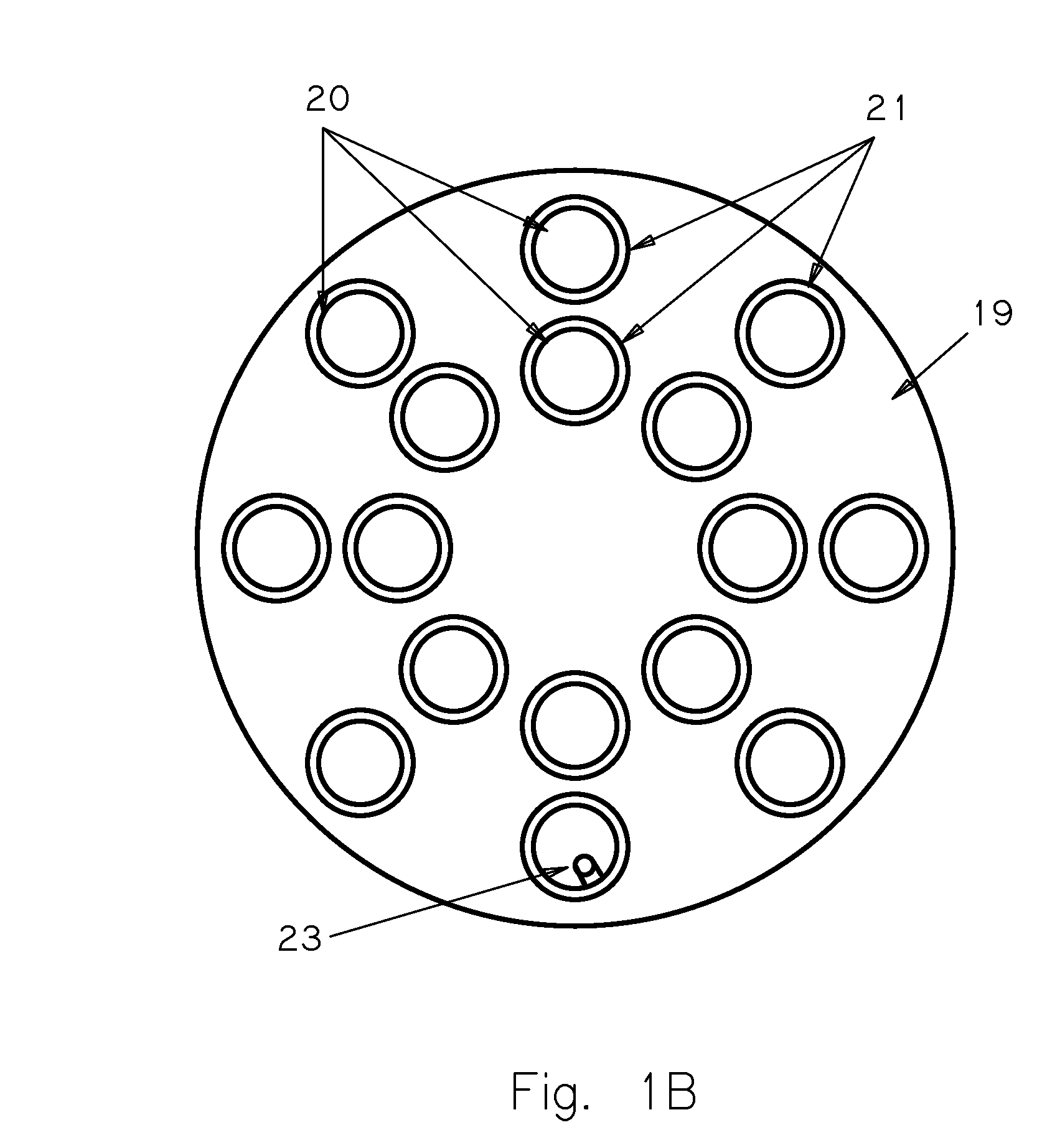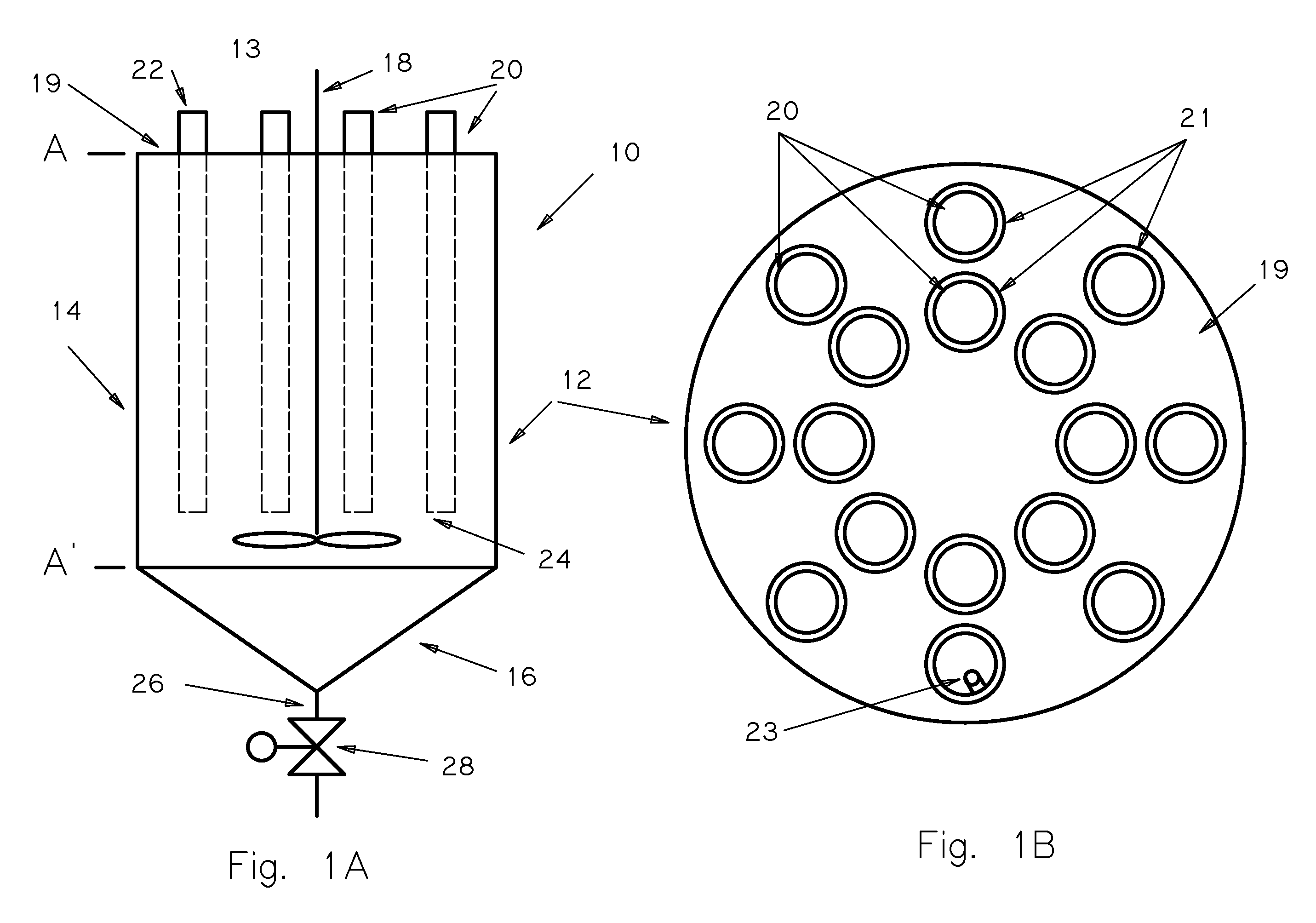Device and Method for Production of Algae
- Summary
- Abstract
- Description
- Claims
- Application Information
AI Technical Summary
Benefits of technology
Problems solved by technology
Method used
Image
Examples
Embodiment Construction
[0025]Referring to FIG. 1A, a schematic side view of an embodiment of the invention is shown. Bioreactor 10 comprises a vessel 12, into which is placed a mixture of nutrient, water, and algae. Vessell 12 comprises an upper zone 14, generally that portion of vessel 12 between mark lines A-A′, and a lower zone 16. Algae grow in the upper zone, and when of sufficient size are filtered into the lower zone 16 for harvesting.
[0026]An agitator 18 rotates to provide general mixing of the algae-nutrient fluid. Those of skill in the art will recognize that the size, shape, and rotational speed of agitator 18 are matters of engineering choice, and may vary depending on the strain of algae being grown.
[0027]Transparent tubes 20 each comprise an open end 22 and a sealed end 24, and extend into the algae-nutrient mixture (as depicted by dashed extension lines). Light fixtures (not shown), preferably comprising fluorescent tubes are inserted into transparent tubes 20 to provided general illuminati...
PUM
 Login to View More
Login to View More Abstract
Description
Claims
Application Information
 Login to View More
Login to View More - R&D
- Intellectual Property
- Life Sciences
- Materials
- Tech Scout
- Unparalleled Data Quality
- Higher Quality Content
- 60% Fewer Hallucinations
Browse by: Latest US Patents, China's latest patents, Technical Efficacy Thesaurus, Application Domain, Technology Topic, Popular Technical Reports.
© 2025 PatSnap. All rights reserved.Legal|Privacy policy|Modern Slavery Act Transparency Statement|Sitemap|About US| Contact US: help@patsnap.com


